In Washoku, the Japanese diet has long been popular for its ability to provide both nourishment and balance. Rooted in centuries-old traditions and influenced by cultural and culinary principles, the Japanese approach to food offers a unique perspective on healthy eating. At the heart of this dietary philosophy lies the concept of Magowayashii, a guiding principle that emphasizes the importance of balance and the inclusion of essential food items. In this article, we are going to find out all about Japanese diet and explore the profound impact of Magowayashii on achieving a harmonious and nutritious lifestyle. Let’s explore the secrets behind the balance and wellness of Japanese cuisine.
What is Washoku?
Washoku is not just ordinary food, but a “food culture” that has been passed down through the lives of the Japanese people for a long time. It is difficult to define precisely, but it involves the appreciation of nature’s blessings such as mountain and sea delicacies, and the use of seasonal ingredients.
In 2013, Washoku was recognized and registered as an Intangible Cultural Heritage by UNESCO. It is important to continue the tradition of Washoku throughout Japan, but in recent years, challenges such as the increase in dual-income households, aging population, and the Westernization of diets have made it difficult to pass down this cultural heritage to the next generation. To maintain a healthy diet, it is crucial to rediscover the values and characteristics of Washoku and incorporate it into our daily meals.
Features of Washoku
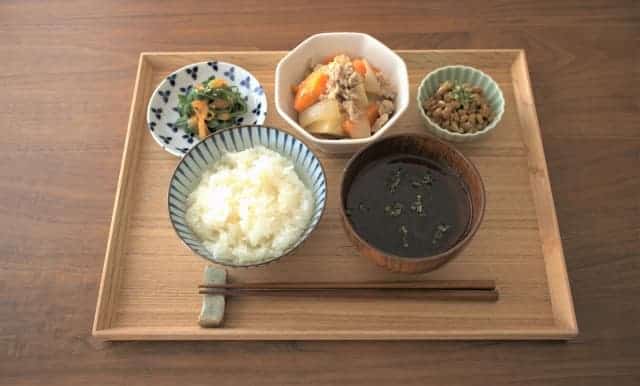
Ichiju-Sansai
The fundamental format of Washoku, which consists of a bowl of rice, soup (such as miso soup), and three side dishes.
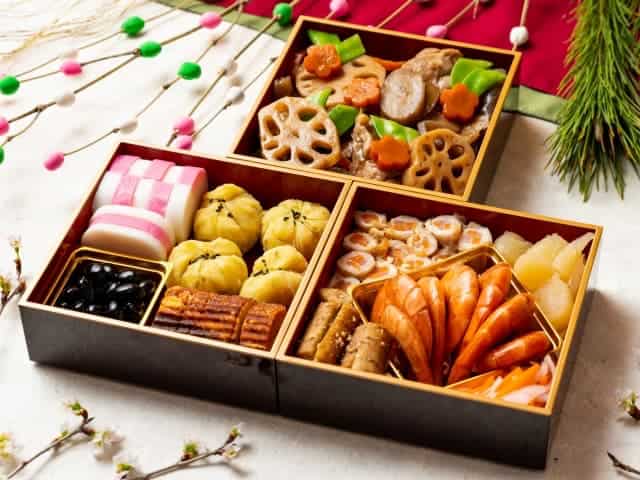
Connection with Seasonal Events
Washoku is closely linked to various seasonal events and festivals in Japan. Some examples of Washoku dishes served during these events are:
- New Year: Osechi Ryori
- Tanabata: Somen (Thin Noodles)
- Juusan-ya (13th Night): Kurigohan (Chestnut Rice)
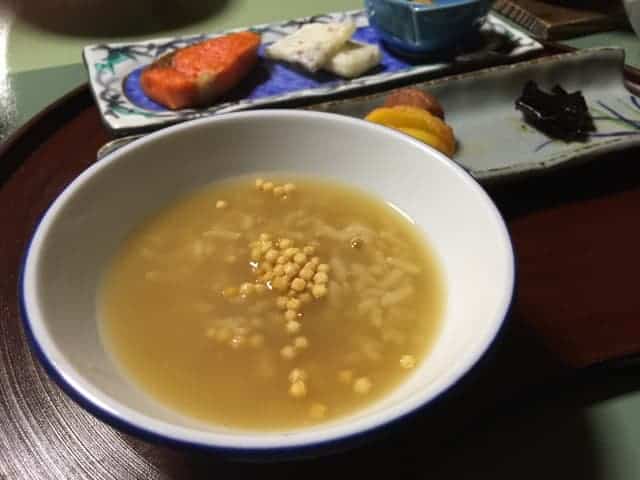
Dashi Jiru
Washoku emphasizes the use of dashi, a traditional soup stock made from kelp and bonito flakes, to enhance flavors and create a harmonious balance in meals by harnessing the umami taste
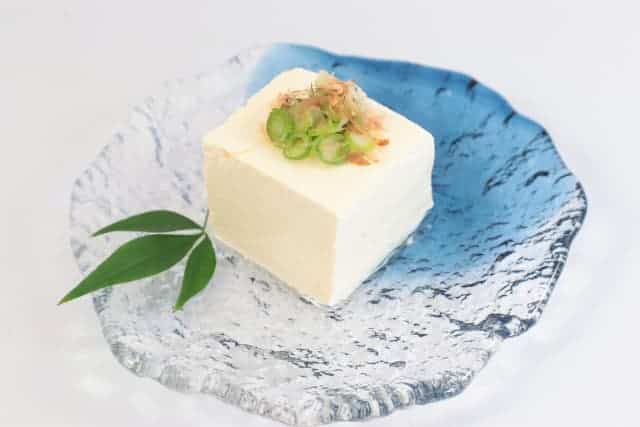
Aesthetics and Presentation
Washoku emphasizes the aesthetics and presentation of food. The arrangement of dishes, use of colorful ingredients, and the choice of tableware are all considered important.
About “Magowayashii”
In today’s fast-paced world, where convenience often takes precedence, the Westernization of food has led to a disruption in our eating habits. But fear not, there is a solution rooted in Japanese tradition – Magowayashii. This simple yet powerful slogan combines the initials of key ingredients that can help us reclaim a healthier diet and lifestyle.
What is Magowayashii?
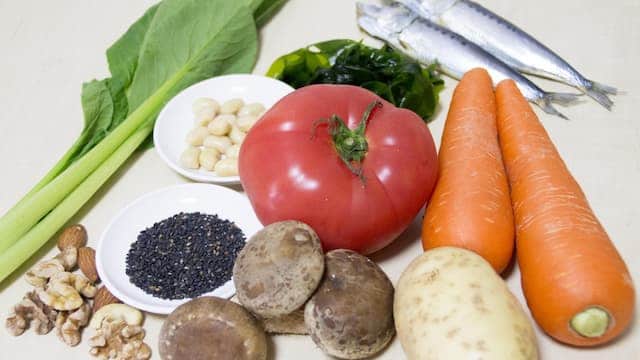
So, what exactly is Magowayashii? It represents a collection of essential ingredients deeply ingrained in Japanese cuisine. By incorporating these ingredients into our meals, we can enjoy a balanced and nutritious diet.
“Ma” represents beans (mame, 豆), including soybeans, adzuki beans, black beans, and others.
“Go” represents sesame seeds (goma, ごま)almonds, chestnuts, ginkgo nuts, peanuts, and more.
“Wa” represents seaweed (wakame, わかめ)like wakame, kombu, hijiki, and mozuku.
“Ya” represents vegetables (yasai, 野菜)especially dark-colored vegetables, which are recommended to be consumed around 120g per day.
“Sa” represents fish (sakana, 魚), with emphasis on oily fish that contains beneficial fats and proteins like DHA and EPA.
“Shi” represents mushrooms (shiitake, 椎茸) such as shiitake, which are low in calories, high in dietary fiber, and versatile in various cuisines.
“I” represents tubers (imo, 芋) like potatoes, sweet potatoes, taro, and yam, which are rich in dietary fiber and contain vitamin C.
Heath benefits
Beans (Ma)
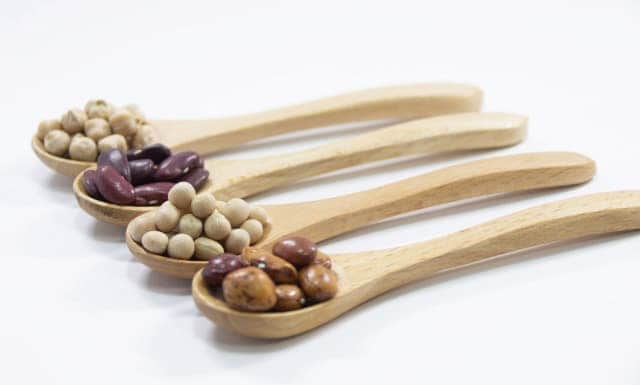
Beans are an excellent source of plant-based protein, making them a valuable alternative for individuals following vegetarian or vegan diets. They are also rich in dietary fiber, which promotes digestive health and helps maintain a healthy weight. Furthermore, beans contain essential minerals like iron, zinc, and magnesium, contributing to overall well-being.
Sesame Seeds and Nuts (Go)
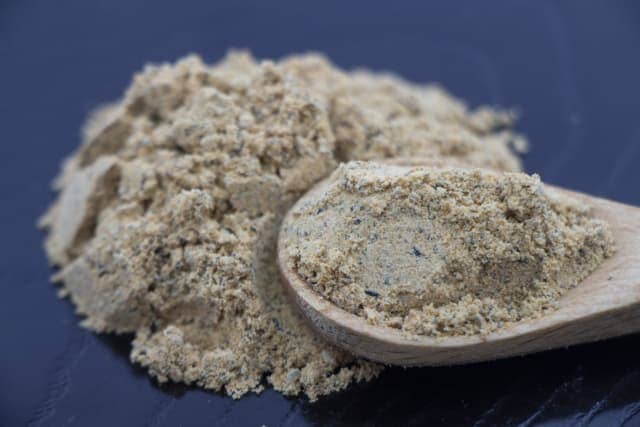
Sesame seeds are packed with beneficial nutrients, including calcium, iron, magnesium, and healthy fats. These tiny seeds are known for their potential to support bone health and lower cholesterol levels. Nuts, such as almonds and peanuts, are rich in heart-healthy fats, protein, and vitamin E, providing a satisfying and nutritious snack option.
Seaweed (Wa)
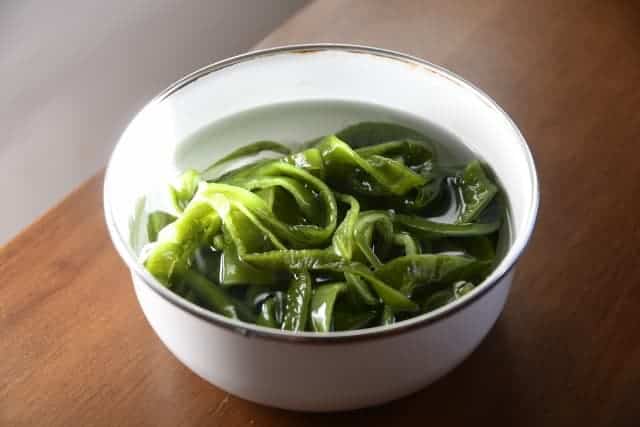
Seaweed is a nutritional powerhouse, delivering a significant amount of vitamins and minerals. It is particularly abundant in iodine, which supports thyroid function and metabolism. Additionally, seaweed contains antioxidants, such as fucoxanthin, which has been linked to potential anti-inflammatory and anti-obesity effects.
Dark-Colored Vegetables (Ya)
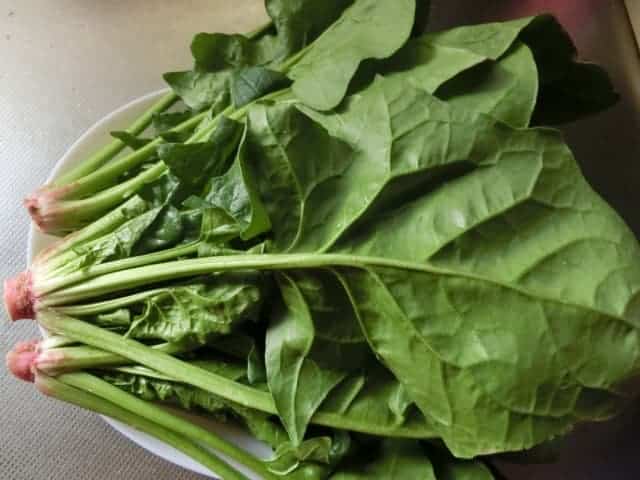
Dark-colored vegetables, including leafy greens like spinach and kale, are rich in antioxidants, vitamins (A, C, and K), and minerals (iron, calcium). They contribute to the prevention of chronic diseases, support a healthy immune system, and promote vibrant skin and hair.
Oily Fish (Sa)
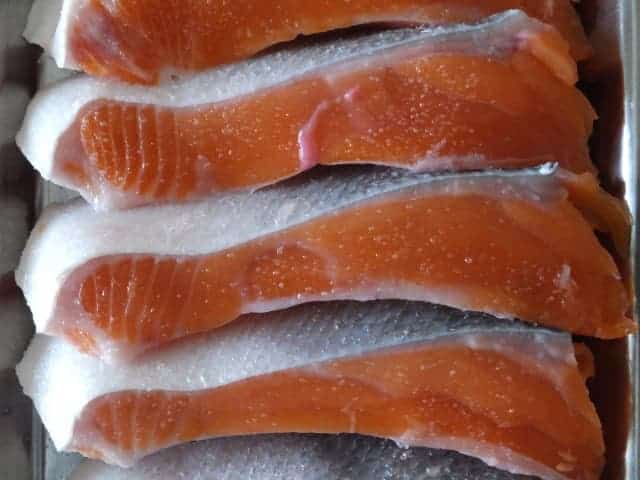
Oily fish like salmon, mackerel, and sardines are favourite for their high content of omega-3 fatty acids, including DHA and EPA. These fatty acids are essential for brain health, reducing inflammation, and maintaining cardiovascular well-being.
Mushrooms (Shi)
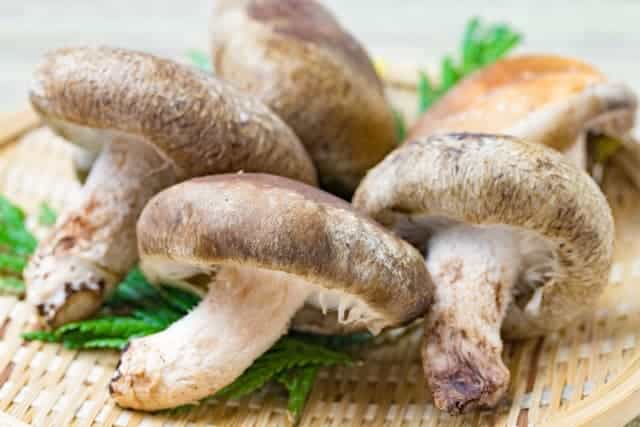
Mushrooms offer an array of health benefits. They are a low-calorie food rich in dietary fiber, contributing to satiety and digestive health. Mushrooms also contain various vitamins, minerals, and antioxidants. Some varieties, like shiitake mushrooms, contain compounds that may support the immune system and have potential anti-cancer properties.
Tubers (I)
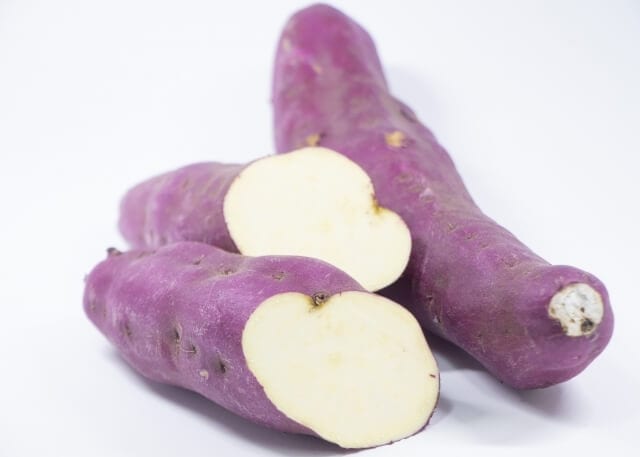
Tubers, such as potatoes and sweet potatoes, are a great source of complex carbohydrates, dietary fiber, and important nutrients like vitamin C and potassium. They provide sustained energy, aid in digestion, and support immune function. Sweet potatoes, in particular, are rich in beta-carotene, an antioxidant that promotes eye health and boosts the immune system.
Recommended Recipes
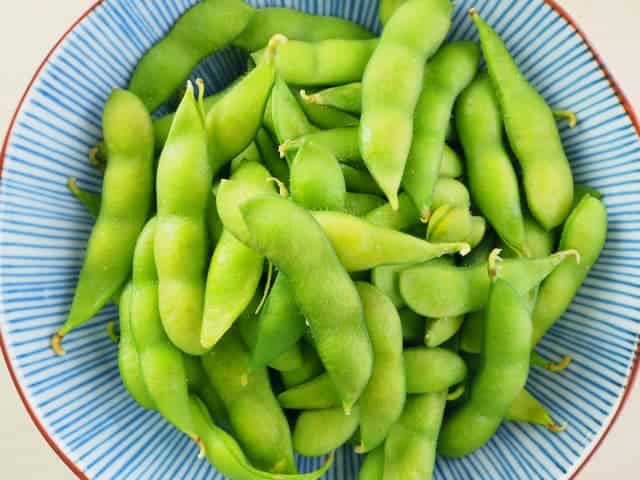
Boiled Edamame
Edamame is a popular appetizer or snack consisting of steamed or boiled young soybeans. These vibrant green beans are enjoyed by gently squeezing them out of their pods. They offer a slightly sweet and nutty flavor, making them a delightful and healthy treat.
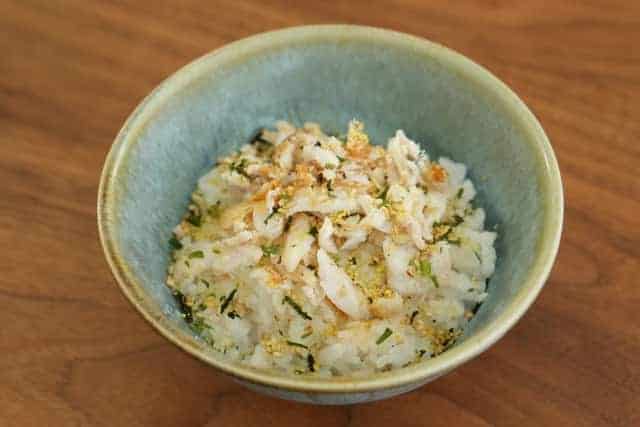
Takenoko Gohan
Takenoko Gohan is a dish that celebrates the season with fresh bamboo shoots and rice. As the rice cooks, it soaks up the delicate aroma and subtle taste of the bamboo shoots, resulting in a fragrant and savory meal.
It is part of Kaiseki Ryouri so you can find it here!
写真出典: sirogohan
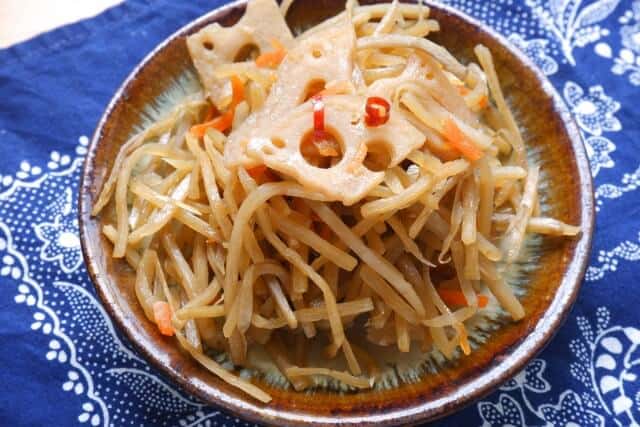
Kinpira Gobo
Kinpira Gobo is a stir-fried dish featuring burdock root and carrots. The ingredients are thinly sliced and sautéed in a soy sauce-based seasoning, often with a hint of sweetness. The result is a dish that showcases the natural earthiness of burdock root and the sweetness of carrots, with a satisfying crunch.
Takeaway
In conclusion, the Japanese cuisine diet offers a holistic approach to healthy eating through concepts like “Ichiju Sansai” and mindful eating. With its emphasis on balance, variety, and moderation, this diet promotes nourishment and satisfaction. By incorporating “Ichiju Sansai,” which consists of one soup and three dishes, meals become well-rounded and portion-controlled. The abundance of fresh, seasonal ingredients, along with the focus on vegetables, seafood, tofu, and fermented foods, provides a rich source of nutrients. Additionally, the practice of “Magowayashii” also reinforces the health-promoting aspects of the Japanese cuisine diet by incorporating nutrient-rich ingredients like beans, sesame seeds and nuts, seaweed, dark-colored vegetables, oily fish, mushrooms, and tubers. Next time, how about trying “Magowayashii” on your own diet!
If you love the healthy and balance of Japanese cuisine, please find out below for details.
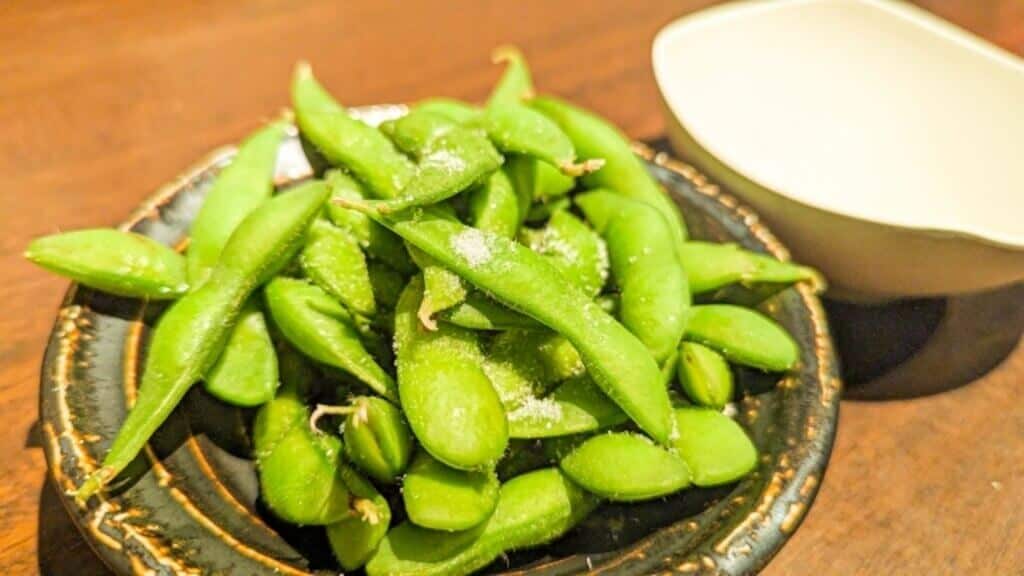

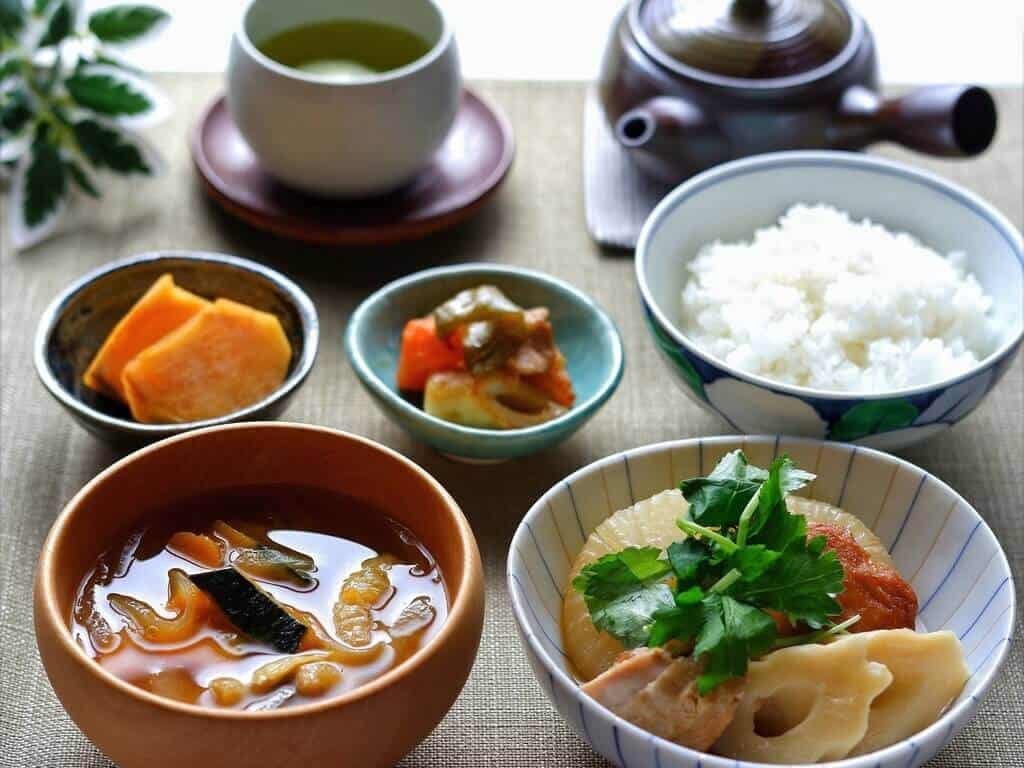

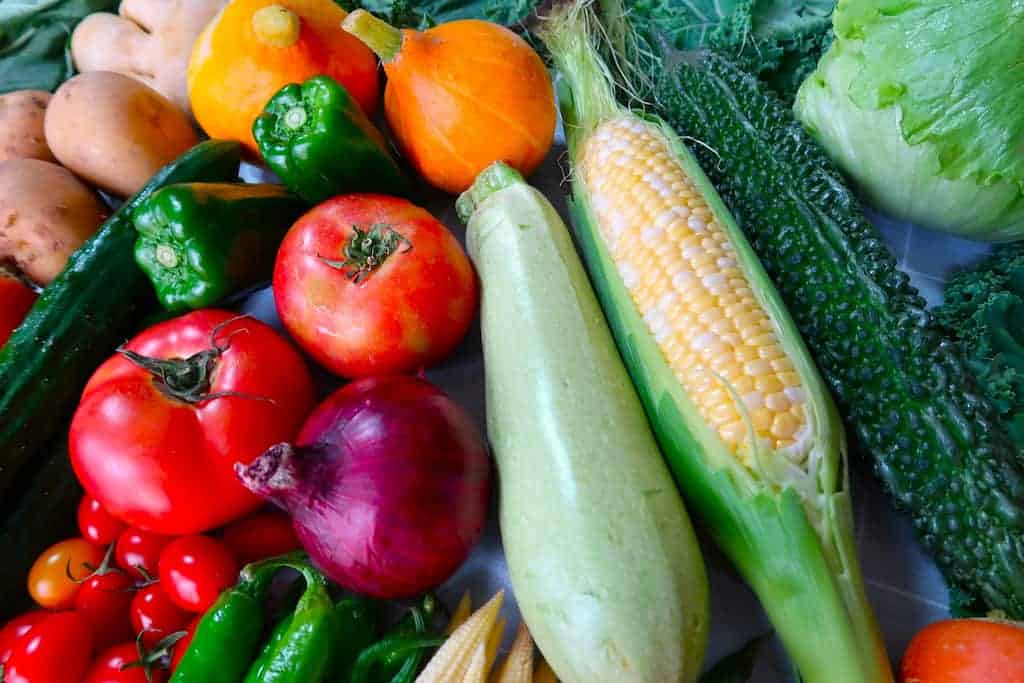
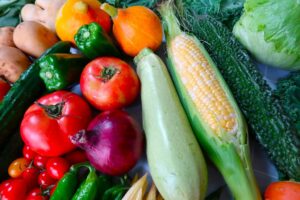
Comments